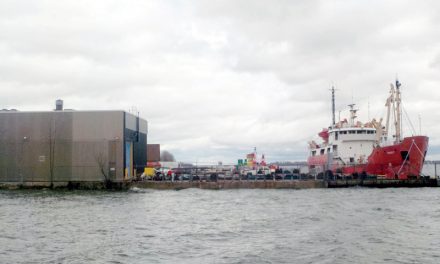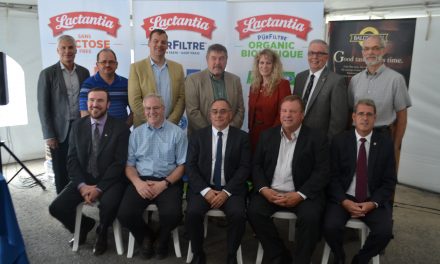Jakob Vogel B.Sc. Agr
AgriNews Contributor
The hay/straw market has truly developed into being a true cash crop for those producers that have been able to maintain their yields over the past couple of years. With forage shortages becoming more commonplace, the need for replacement forages is putting heavy pressure on the pricing of these commodities and less focus on the quality of said forage.
As earlier mentioned, it is becoming quite common to refer to hay and straw as commodities rather than forages now since it is being bought and sold so frequently within the dairy, beef and horse markets. The concern for dairy producers is the increasing cost associated with purchasing feed from unknown suppliers when their own expected crops failed or yielded poorly. There are several factors to consider when trying to maximize the amount of money that is left over for our producers after the purchase of not only protein supplements, but also now a stable forage based commodity. Among these factors is the idea of precision feeding, meaning feeding the right feed to the right group of animals. Although this is a concept easily discussed, it takes time, patience and logical (proactive) thinking to make sure that we are able to align our feedstuffs correctly throughout the winter months and into the next growing season. Additionally to this, we need to be able to assess an accurate level of inventory so that we do not over feed on an ingredient that will lead us to running short or require additional purchases.
When feeding with precision, start by having accurate samples of the different feeds, including straw. From there, we need to assess the requirements for these animals. For example, 4th cut wrapped bales is a great feed for milking cows, however – not ideal for heifers considering the protein, energy and digestibility of this feed. Again, with this – it would important to insure that we can access these feeds or group the feeds together – heifer feed together, milk cow feed together and dry cow feeds together. This way, not only are we keeping these feeds grouped for simplicity, we can also insure to limit possible mixups between feeders etc.
There are several ways to calculate inventories, most of which are done using spreadsheets or mobile applications. While all of these systems can yield accurate results, the danger lies in the assumption behind the program. For example, while calculating the tonnage within an AgBag, some will assume an average feed density based on the diameter of the bunk. However – we know that the speed at which the bag is filled, the dry matter of the forage as well as the tension used at the bagger (pressure) can all have an impact of the true density and ultimately the total amount of forage in storage. As you can image, assuming a density within a pile, bunk or Ag Bag can be quite detrimental to the inventory situation on farm. The other factor that is often over looked, or at least under estimated is shrink. Unfortunately, even the best bunks have shrink or loss due to fermentation. The severity of the shrink should be realistic if not a little high to insure we have some wiggle room with dry matter changes, and animal number fluctuations within the herd.
Along with inventories, it is often overlooked to consider the importance of stability within different groups of animals. Naturally, we do not want any fluctuation within the diets, which should allow for constant high performance from all groups of cows. However, when facing a feed shortage – this is becomes quite a challenge. Typically, the priorities for ration stability is Dry Cows, Milk Cows and finally Heifers.
Now with the incorporation or the monitoring of return over feed cost (ROFC or ROI), it is important to measure these metrics accurately and precisely. Again, similarly to the density and inventory calculations, numbers can be commonly measured to make things look really good or really poor depending on your position with the person who is calculating your ROFC. It is important during the analysis of the data that any assumptions be discussed and explained and most importantly, be agreed upon by yourselves as producers, and the person measuring this. A specific case that was being worked on, involved inflation of the price of palm fat by 300$ per tonne which obviously decreased the ROF, which naturally raised questions from the producer. The important factor is to have a precise and accurate value for purchased ingredients on a per tonne basis.
Straw has become a multi-usage commodity ranging from bedding to being incorporated as a feed ingredient from calves all the way to the milking cow group. The changes in utilization has also put an upwards pressure on the price of straw. Again, it is important to sample straw to assess mineral content within the commodity.So, when facing an inventory shortage, which many producers will be facing this winter there are several solutions available that can be used in harmony to provide stability to the dairy herd. Depending on your area and your specific requirement of forage, another thought may be to establish or consider the use of a forage extender. These products are typically high fiber ingredients (or combinations) that can be used in place of forages without harming the cows due to excessive starch content.












